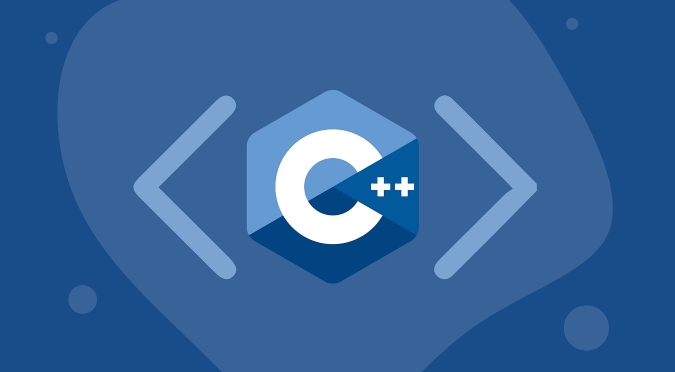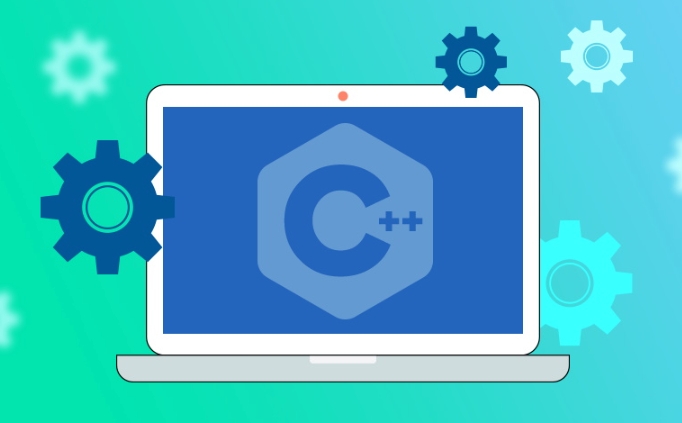C template argument deduction for class templates (CTAD) in C 17
Jul 06, 2025 am 12:52 AMCTAD is a feature introduced in C 17, which is used to automatically deduce template parameter types when creating class template instances, making the code more concise. 1. It deduces template parameters through constructor parameter types; 2. It supports custom classes, and if necessary, the derivation rules can be controlled through the deduction guide; 3. There are restrictions, such as they are not applicable to partial specialization, derivation may not be intuitive, and are affected by implicit conversions, etc.

CTAD (Class Template Argument Deduction) is a feature introduced by C 17. Its main function is to allow the compiler to automatically deduce template parameter types when creating class template instances. This is very similar to the type derivation of function templates, but before C 17, the template parameters of class templates had to be explicitly specified, which in some cases seemed cumbersome.

Why do you need CTAD?
When there is no CTAD, for example, if you use std::pair or std::vector , you need to write this:

std::pair<int, double> p(1, 2.0);
If you have a temporary variable or the construction is complicated, explicitly writing the type becomes repetitive and prone to errors. With CTAD, you can write it directly:
std::pair p(1, 2.0); // The compiler will automatically deduce int and double
This makes the code more concise, especially when the template parameters are long or deep nested.

How to use CTAD?
The core of CTAD is that the parameter type of the "constructor" determines the template parameter type of the class template. The compiler will deduce template parameters based on the actual parameters passed to the constructor.
For example:
template<typename T>
struct MyVector {
MyVector(T a, T b) {}
};
MyVector v(3, 5.0); // Deduce T = double, because 3 can be converted to double Here, the compiler sees that two parameters are int and double , but the constructor requires that the two parameters are of the same type, so int is converted into double .
However, it should be noted that not all cases can be derived correctly. For example, the following situation will fail:
MyVector v(3, "hello"); // Error: Unable to unify types
How to support CTAD in custom classes?
If the class template you wrote yourself also wants to support CTAD, you don't need to do anything extra. As long as the constructor parameters have clear types, the compiler can help you deduce them.
But sometimes you want to control the derivation method, such as enabling a certain derivation rule only under a specific constructor, you need to write a "deduction guide".
For example:
template<typename T>
struct Wrapper {
template<typename U>
Wrapper(U value) : data(static_cast<T>(value)) {}
private:
T data;
};
// deduction guide
template<typename U>
Wrapper(U) -> Wrapper<typename std::decay<U>::type>;This way when you write:
Wrapper w(42.0f);
It will be derived as Wrapper<float></float> instead of the default possible double .
CTAD Limitations and Precautions
- Not available for partial specialization : CTAD is derived based on the constructor of the main template. If the class template has multiple specialized versions, unexpected results may occur.
- Derivation is not always intuitive : for example, if the constructor uses template parameter packages, overload constructors, etc., the derivation result may not meet expectations.
- Note the effect of type conversion : Just like
intmentioned above is converted todouble, some implicit conversions affect the final derived type.
Examples of FAQs:
- Too many constructor templates lead to ambiguity
- The default parameters were used but no value was passed, resulting in the inability to derivate
- Type alias or typedef confuses the actual type
Let's summarize
CTAD is a convenient gadget that allows you to write less duplicate template parameters. But it is not omnipotent, and sometimes it still has to manually specify the type, especially when the logic is complex or the intention is not clear enough.
Basically that's it.
The above is the detailed content of C template argument deduction for class templates (CTAD) in C 17. For more information, please follow other related articles on the PHP Chinese website!

Hot AI Tools

Undress AI Tool
Undress images for free

Undresser.AI Undress
AI-powered app for creating realistic nude photos

AI Clothes Remover
Online AI tool for removing clothes from photos.

Clothoff.io
AI clothes remover

Video Face Swap
Swap faces in any video effortlessly with our completely free AI face swap tool!

Hot Article

Hot Tools

Notepad++7.3.1
Easy-to-use and free code editor

SublimeText3 Chinese version
Chinese version, very easy to use

Zend Studio 13.0.1
Powerful PHP integrated development environment

Dreamweaver CS6
Visual web development tools

SublimeText3 Mac version
God-level code editing software (SublimeText3)

Hot Topics
 Using std::chrono in C
Jul 15, 2025 am 01:30 AM
Using std::chrono in C
Jul 15, 2025 am 01:30 AM
std::chrono is used in C to process time, including obtaining the current time, measuring execution time, operation time point and duration, and formatting analysis time. 1. Use std::chrono::system_clock::now() to obtain the current time, which can be converted into a readable string, but the system clock may not be monotonous; 2. Use std::chrono::steady_clock to measure the execution time to ensure monotony, and convert it into milliseconds, seconds and other units through duration_cast; 3. Time point (time_point) and duration (duration) can be interoperable, but attention should be paid to unit compatibility and clock epoch (epoch)
 What is the volatile keyword in C ?
Jul 04, 2025 am 01:09 AM
What is the volatile keyword in C ?
Jul 04, 2025 am 01:09 AM
volatile tells the compiler that the value of the variable may change at any time, preventing the compiler from optimizing access. 1. Used for hardware registers, signal handlers, or shared variables between threads (but modern C recommends std::atomic). 2. Each access is directly read and write memory instead of cached to registers. 3. It does not provide atomicity or thread safety, and only ensures that the compiler does not optimize read and write. 4. Constantly, the two are sometimes used in combination to represent read-only but externally modifyable variables. 5. It cannot replace mutexes or atomic operations, and excessive use will affect performance.
 How to get a stack trace in C ?
Jul 07, 2025 am 01:41 AM
How to get a stack trace in C ?
Jul 07, 2025 am 01:41 AM
There are mainly the following methods to obtain stack traces in C: 1. Use backtrace and backtrace_symbols functions on Linux platform. By including obtaining the call stack and printing symbol information, the -rdynamic parameter needs to be added when compiling; 2. Use CaptureStackBackTrace function on Windows platform, and you need to link DbgHelp.lib and rely on PDB file to parse the function name; 3. Use third-party libraries such as GoogleBreakpad or Boost.Stacktrace to cross-platform and simplify stack capture operations; 4. In exception handling, combine the above methods to automatically output stack information in catch blocks
 What is a POD (Plain Old Data) type in C ?
Jul 12, 2025 am 02:15 AM
What is a POD (Plain Old Data) type in C ?
Jul 12, 2025 am 02:15 AM
In C, the POD (PlainOldData) type refers to a type with a simple structure and compatible with C language data processing. It needs to meet two conditions: it has ordinary copy semantics, which can be copied by memcpy; it has a standard layout and the memory structure is predictable. Specific requirements include: all non-static members are public, no user-defined constructors or destructors, no virtual functions or base classes, and all non-static members themselves are PODs. For example structPoint{intx;inty;} is POD. Its uses include binary I/O, C interoperability, performance optimization, etc. You can check whether the type is POD through std::is_pod, but it is recommended to use std::is_trivia after C 11.
 How to call Python from C ?
Jul 08, 2025 am 12:40 AM
How to call Python from C ?
Jul 08, 2025 am 12:40 AM
To call Python code in C, you must first initialize the interpreter, and then you can achieve interaction by executing strings, files, or calling specific functions. 1. Initialize the interpreter with Py_Initialize() and close it with Py_Finalize(); 2. Execute string code or PyRun_SimpleFile with PyRun_SimpleFile; 3. Import modules through PyImport_ImportModule, get the function through PyObject_GetAttrString, construct parameters of Py_BuildValue, call the function and process return
 What is function hiding in C ?
Jul 05, 2025 am 01:44 AM
What is function hiding in C ?
Jul 05, 2025 am 01:44 AM
FunctionhidinginC occurswhenaderivedclassdefinesafunctionwiththesamenameasabaseclassfunction,makingthebaseversioninaccessiblethroughthederivedclass.Thishappenswhenthebasefunctionisn’tvirtualorsignaturesdon’tmatchforoverriding,andnousingdeclarationis
 How to pass a function as a parameter in C ?
Jul 12, 2025 am 01:34 AM
How to pass a function as a parameter in C ?
Jul 12, 2025 am 01:34 AM
In C, there are three main ways to pass functions as parameters: using function pointers, std::function and Lambda expressions, and template generics. 1. Function pointers are the most basic method, suitable for simple scenarios or C interface compatible, but poor readability; 2. Std::function combined with Lambda expressions is a recommended method in modern C, supporting a variety of callable objects and being type-safe; 3. Template generic methods are the most flexible, suitable for library code or general logic, but may increase the compilation time and code volume. Lambdas that capture the context must be passed through std::function or template and cannot be converted directly into function pointers.
 What is a null pointer in C ?
Jul 09, 2025 am 02:38 AM
What is a null pointer in C ?
Jul 09, 2025 am 02:38 AM
AnullpointerinC isaspecialvalueindicatingthatapointerdoesnotpointtoanyvalidmemorylocation,anditisusedtosafelymanageandcheckpointersbeforedereferencing.1.BeforeC 11,0orNULLwasused,butnownullptrispreferredforclarityandtypesafety.2.Usingnullpointershe






